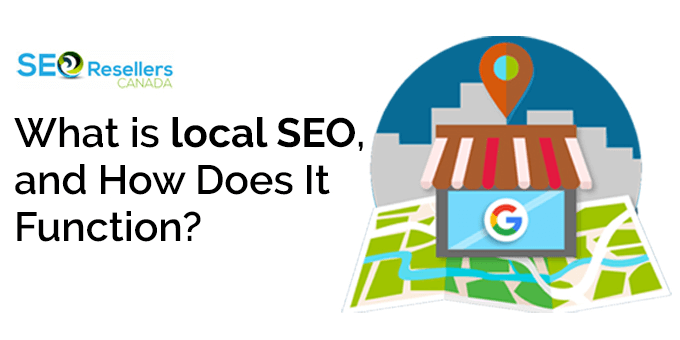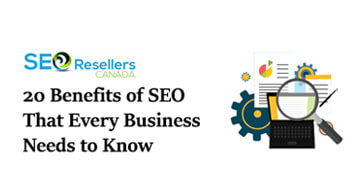Search engine optimization (SEO) is a process to improve the visibility and search engine rank of a website.
The results are evident in the form of increased traffic on the website. Almost all search engines use SEO today.
But what happens if the link to your website displays the content that another website also displays?
In simpler words, what happens when two URLs (Uniform Resource Locator) display the same content?
While many aspects of SEO are simple, like the heading, meta tags, and link building, some may be a bit tricky to understand.
However, these tricky ones are essential to help rank your website.
One of these trickier elements in SEO is Canonicalization and plays an essential role in how search engines evaluate the quality of the web pages.
1- What is Canonicalization?

In SEO, canonicalization is the term used to describe the web content that has one or more URLs. For example, you are an e-commerce site selling summer dresses in several colors.
Each summer dress might have its separate page, which could be the same as all colors, with pricing, description, material, and brand all the same except the color.
If there are 10 different dress colors, there would be 10 pages with identical content. Now, imagine if you sell 100’s of such dresses, each with 10 colors, the duplicate content pages can easily flood your site.
This is what you would never want. So, SEO Canonicalization can help alleviate this issue.
Canonicalization uses tags (rel=”canonical”), which is a snippet of the HTML code to define the main version for duplicate, near-duplicate, and similar pages.
This means that if you have similar content available under different URLs, canonical tags can specify which version is main and thus should be indexed.
2- Why Is Canonicalization Important?
The importance of canonicalization cannot be overlooked as search engines do not like duplicate content.
Duplicate content makes it harder for them to choose which version of the page to index (they can only index one), which version of the page to rank for relevant queries, and whether they should consolidate link equity on one page or split it between multiple versions.
Too much duplicate content can lower your website’s ranking or even remove the site for all search queries.
This would be catastrophic for your business. Canonicalization or canonical tags can solve all these issues.
They let the search engines know which version of the page they should index and rank, and where to consolidate link equity.
If you fail to specify a canonical URL, search engines will take matters in their own hands, and relying on search engines is not a great idea.
They can select a version of your page that you don’t want to be canonical. Search engines will crawl various URLs with identical content and may fail to pick the crucial and extraordinary content, thus loss of unique content from your website.
From an SEO perspective, duplicate links to the original content split up duplicate URLs and minimize the significance of link building.
This means the production of huge amounts of similar content will threaten your search engine ranking value.
And a low search engine ranking value will cause a low flow of traffic, thus decreasing the popularity of the site and decline in revenue.
So, canonicalization is important and even more for e-commerce websites.
3- What is a canonical tag?
A canonical tag (an HTML link tag with attribute rel=canonical) is essentially the marker between duplicate content and preferred content.
It specifies the source URL (the first and original page of content) of a given page to a search engine. It is, in essence, a method of informing search engines that a particular URL is actually the authentic and original source of the given content.
4- How does a canonical tag work?

Canonical tags are used to establish the fact that a particular page is the true source of content.
Let’s elucidate the concept:
https://www.yourarticle.com
https://www.yourarticle.com
https://yourarticle.com
https://yourarticle.com/index.php
https://yourarticle.com/index.php?refer=twitter
All of these URLs will lead you to the same page; however, to a search engine, each of these represents an exclusive page.
Canonical tags are used by search engines to sift through pages and retain original content on the original page.
In this way, the issue of duplicate and identical content can be addressed, and the source URL can be given its due search engine ranking value.
5- Why Do We Need SEO Canonicalization?
A dearth of canonical tags can cause a plethora of problems.
- In the event of identical content, search engines will not know which pages to exclude and which to include in its search indices.
- This means that search engines will also not know whether or not to link the content to one page or keep them separate.
- The search engines will crawl (visit your website to track a process) various URLs with identical content and will skip/skim/fail to pick out your website’s crucial and extraordinary content. This would mean the loss of unique content from your website.
- From an SEO viewpoint, duplicate links to the original content split up duplicate URLs and minimize the significance of link building. This means that the production of vast amounts of similar content will jeopardize your search engine ranking value.
- A low search engine ranking value will cause a low flow of traffic to your website. This would inevitably decrease the popularity of your website and cause a decline in your revenue.
- The search engine itself can, subsequently, become less germane and relevant.
- Original URLs may not appear as original, and an incorrect URL may display the authentic content as ‘the source.’
Canonicalization is the fundamental step to improving your website’s credibility and SEO ranking.
It will give more authority to your page. Since canonicalization consolidates traffic metrics of different similar content pages into a single URL, your day-to-day website can be gauged, measured, and tracked.
Canonicalization becomes more important for e-commerce websites that generate links based on several versions of a sole product.
6- How to Set up a Canonical Tag?

-
- 1. Select a preferred URL.
-
- 2. Now, add “rel=canonical” in the link element or the section of the preferred URL and all its variants:
-
- 3. Be sure to use only one canonical link; otherwise, all of them will be dismissed. A faulty SEO plugin could easily result in such a scenario.
- 4. Use 301 redirects for all URLs that are not canonical. This will direct traffic from other URLs to your preferred URL.
7- When Should SEO Employ Canonical Tags?
The choice of a proper canonical URL for every series of similar URLs improves the SEO of your website.
The search engine will know which version is canonical and will, therefore, compute all the links towards all the different versions, as links to that sole authentic version.
Canonical tags are commonly used when different URLs exist for the same content.
Another situation where the employment of these canonical tags is helpful is where several categories and tags result in the same content.
At times mobile and phone websites display similar content but through a different domain. In a situation like this, canonical tags can be useful.
8- The Relevance of 301-Redirect and Canonical Tags

While both of these phenomena act similarly, from an SEO standpoint, they are not interchangeable.
Remember, a 301-redirect takes the person browsing a website or web page to the canonical URL, while a rel=canonical tag does not do this.
Usually, only one of these should work. If your aim is to permanently consolidate and combine two pages and remove the duplicates, using a 301-redirect is advisable.
Moreover, if your site structure has altered, a 301-redirect would be a good option since it will also correct bookmarks.
However, if you wish to keep both pages available to people browsing your site but only have one appear in search results, it would be smarter to use rel=canonical.
Remember, having search engines index all of your duplicate content affects the relevancy of their results and inevitably affects the ranking of your page.
This leads to other domino effects like reduction of traffic on your site and a decrease in your revenue.
However, it is also crucial to bear in mind that canonical tags will not instantly and automatically enhance the conspicuity and visibility of your website.
The results of using canonical tags will vary depending on how effectively you use them.
They will also vary, considering they are actually needed to be used. It will be helpful to evaluate if your website has duplicate content or multiple URLs pointing to the same content.
If the answers to these are yes, then you should devise a strategy on how to implement these tags and on what pages.
9- Common Mistakes in Implementing Canonical Tags
Canonical Tags mistakes can lead to display issues in the search engines and lower rankings as well.
The worst part, most of the time, the errors pass unnoticed for a very long time.
10- Setting Home Page as Preferred URL
There are times where your home page is the preferred URL, but not always.
If all your canonical pages point to the home page, you risk having none of your pages crawled and indexed by the search engines.
11- Using Multiple Canonical Links
Each page must have only one canonical link, or they all will be dismissed. This can occur without you even being aware of it.
You might have inaccurately implemented an SEO plugin or improperly edited theme.
12- Specifying Irrelevant Content in Canonical Tag
Canonical tags are used to fix duplicate content issues. If you’re trying to use it just to rank specific web pages on different keywords, it’s not going to work very well.
If you have two very similar articles, you can canonicalize one version, but it’s always a better idea to simply 301 redirect the weaker version to the stronger one.
13- HTTP & HTTPS Issues

Often, when people merge from HTTP to HTTPS, they forget to fix the canonical tags. If you’re running your website on HTTPS, the canonical tag tells the search engine to check the HTTP version instead.
If you have your 301s set properly, the redirect will send Google back to the HTTPS, in a never-ending loop.
14- Conclusion
By taking advantage of canonicalization, you can indicate the structure and organization of your content in a way that shows it as unique as your business and your customers.
If you need help in setting up the conical tags, then work with the right and skilled SEO team.
Editor’s Note: This post was originally published on July 01, 2017, and has been completely revamped and updated for accuracy and comprehensiveness.













